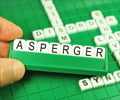
The results provide an important basis for developing potential treatments.
People who suffer from dyslexia have difficulties with identifying speech sounds in spoken language.
For example, while most children are able to recognise whether two words rhyme even before they go to school, dyslexic children often cannot do this until late primary school age. Those affected suffer from dyslexia their whole lives. However, there are also always cases where people can compensate for their dyslexia.
"This suggests that dyslexia can be treated. We are therefore trying to find the neural causes of this learning disability in order to create a basis for improved treatment options," said D¡az.
Between five and ten percent of the world's children suffer from dyslexia, yet very little is know about its causes. Even though those affected do not lack intelligence or schooling, they have difficulties in reading, understanding and explaining individual words or entire texts.
Advertisement
"This malfunction at a low level of language processing could percolate through the entire system. This explains why the symptoms of dyslexia are so varied," said D¡az.
Advertisement
In contrast, no differences were apparent between controls and dyslexic participants if the tasks involved only listening to the speech sounds without having to perform a specific task.
"The problem, therefore, has nothing to do with sensory processing itself, but with the processing involved in speech recognition," stated Diaz.
No differences could be ascertained between the two test groups in other areas of the auditory signalling path.
The findings of the Leipzig scientists combine various theoretical approaches, which deal with the cause of dyslexia and, for the first time, bring together several of these theories to form an overall picture.
The researchers' next project is now to study whether current treatment programmes can influence the medial geniculate body in order to make learning to read easier for everyone in the long term.
Source-ANI









